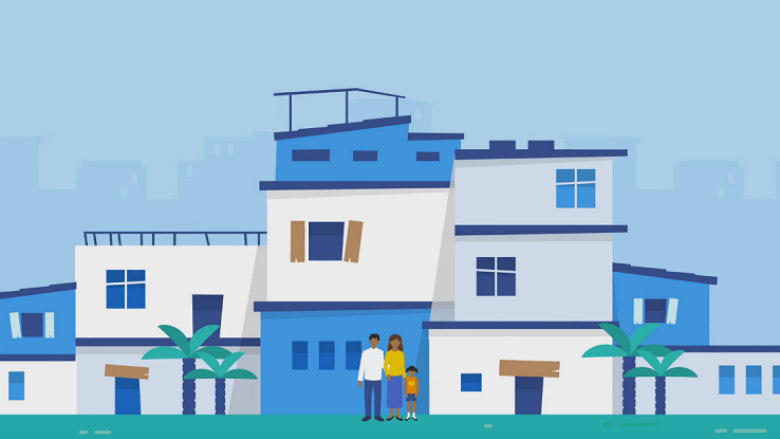Every year, the warm waters of the Pacific and Atlantic Oceans give rise to typhoons, hurricanes, and other tropical storms that routinely batter the islands and coasts of the Asia-Pacific and the Caribbean. Hurricane Sandy, Typhoon Haiyan, and now Hurricane Matthew are just some of the storms that have destroyed homes and affected lives across these regions in the past decade. Even as the storms move on, recovering from the aftermath can take years.
and combined with the fact that people increasingly live in urban areas—with a projected 6 billion by 2045—the potential for devastation will only continue to grow. By 2030, without significant investment to improve the resilience of cities around the world, climate change may push up to 77 million urban residents into poverty, according to Investing in Urban Resilience, a new report by the World Bank and the Global Facility for Disaster Reduction and Recovery (GFDRR).
This October, as national and city leaders convene in Quito, Ecuador for the third United Nations Conference on Housing and Sustainable Urban Development, or Habitat III, these recent disasters should weigh heavily on their minds:
One way that the World Bank has helped is through community-driven development (CDD), an approach that gives control over planning decisions and investment resources to community groups and local governments.
CDD projects build upon the communities’ own resources, solidarity, and skills. By directly providing communities with funds and engaging them in development decisions, CDD programs can tap local knowledge and expertise as well as local understanding of risk, reducing loss of life and economic impacts from disasters.
“Organized communities have their own expertise in managing risk based on their lived experience,” says Margaret Arnold, Senior Social Development Specialist at the World Bank. “To better understand and reduce the risks they face, it is crucial to recognize and support their expertise, and help to foster constructive relationships between communities and their local and national authorities.”
In countries such as Bangladesh, Haiti, and Indonesia, many CDD programs have started as pilot operations but later expanded at regional or national levels. For example, Indonesia has the world’s largest ongoing CDD program, active in more than 70,000 villages and urban wards across the country. With these programs operating nationally, they can be quickly repurposed to meet the challenges of post-disaster recovery or help build up community resilience before hazards strike.
Some World Bank projects that work to build urban resilience by empowering communities include:
- In Bangladesh, the Low-Income Community Housing Support Project aims to improve shelter and living conditions in selected low-income and informal settlements. The project worked with the country’s National Housing Authority on alternative building standards that struck a balance between necessary standards for safety and mitigation of disaster risks, such as cyclones and floods, and what was realistic for high-density, low-income communities. These new standards helped ensure safety for poor urban communities.
- In Haiti, the Urban Community-Driven Development Project (PRODEPUR) works to build political stability and restore basic services in neighborhoods with high levels of violence and crime across five municipalities by empowering community-based organizations to implement and maintain subprojects. In response to the January 2010 earthquake, the project immediately prioritized cash-for-work subprojects that addressed the disaster recovery needs of communities—for example, subprojects on debris removal and drainage ditch cleaning that provided temporary jobs to over 5,000 people, and housing repair and reconstruction that benefitted approximately 24,800 urban households.
- In the Philippines, Improving Livelihood Opportunities for Vulnerable Urban Communities was a pilot CDD project that aimed to improve livelihoods for about 3,750 households in poor urban communities. The selected communities were the ones in and around Manila most affected by floods from the 2009 typhoon season. The communities invested in subprojects related to livelihoods, assisted in post-disaster economic recovery, and constructed new lined canals and drainage structures that could better cope with flooding.
- In Indonesia, the National Program for Community Empowerment in Urban Areas Project (PNPM-Urban) provides grants and technical support to improve basic infrastructure and social services for 30 million urban residents across 11,000 urban wards (kelurahan). Supported by GFDRR, the program has a focus on disaster response, which serves as a central part of the national government’s post-disaster recovery strategy. Previous urban CDD programs in Indonesia have also proven effective in emergency response, such as reconstruction efforts following the 2004 Indian Ocean tsunami and the 2006 Yogyakarta earthquake.


